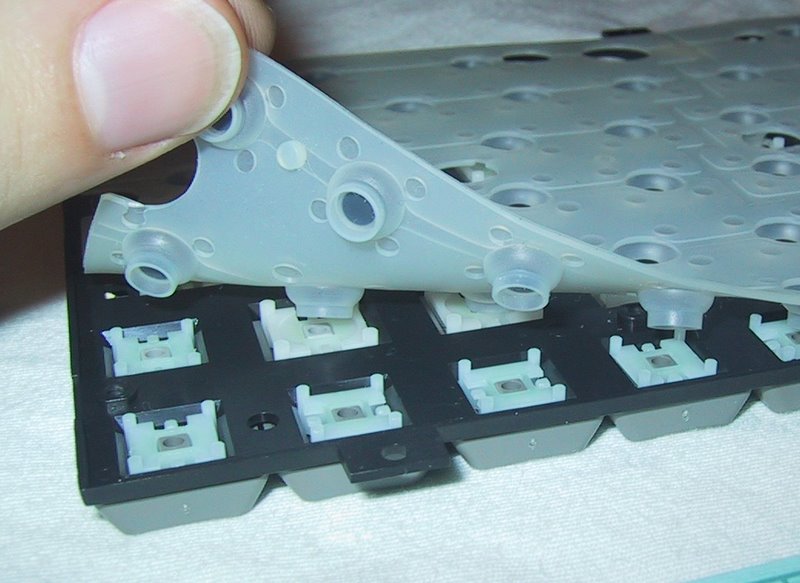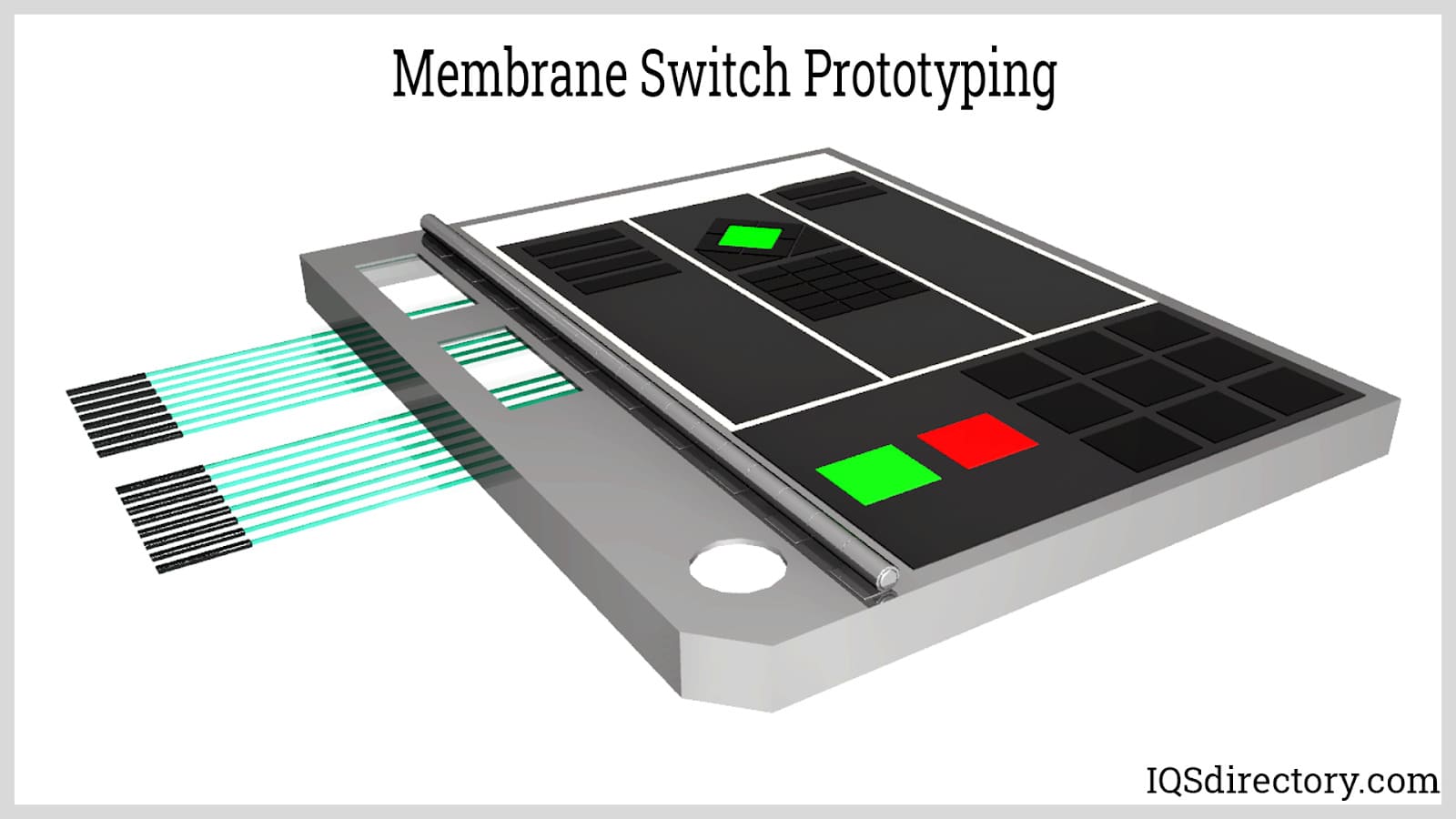Exploring the Future of Membrane Switches in Emerging Technologies
Exploring the Future of Membrane Switches in Emerging Technologies
Blog Article
Understanding the Relevance of Membrane Switches in Customer User Interfaces
Membrane switches are integral elements in the design of efficient customer interfaces, facilitating not just functionality however additionally enhancing visual allure and customer interaction. As we discover the various benefits and future patterns connected with Membrane technology, it comes to be clear that these buttons are much more than just elements; they stand for a convergence of development and usefulness.
What Are Membrane Switches?

The spacer layer, which contains sticky properties, enables the splitting up of the circuit layer from the overlay, guaranteeing that the switch remains in a non-activated state up until pressed. When stress is used to the overlay, it compresses the spacer layer, connecting the void and completing the circuit in the underlying layer. This layout not just reduces the physical space required for standard mechanical buttons but likewise improves the longevity of the tool, as Membrane switches are normally immune to dust, moisture, and other ecological variables.
Typically found in applications ranging from consumer electronics to clinical devices, Membrane switches are integral to contemporary innovation, giving a effective and easy to use interface that straightens with contemporary layout demands.
Advantages of Membrane Buttons
While many button innovations exist, Membrane Switches offer distinct benefits that make them particularly preferable in different applications. Among the main advantages of Membrane buttons is their small style, which permits space-saving implementations in tools where property is restricted. Their slim profile not just improves visual charm but also facilitates lightweight building.
An additional significant benefit is their resistance to environmental variables. Membrane switches are generally secured versus moisture, dirt, and pollutants, making them optimal for usage popular atmospheres, such as medical gadgets and commercial tools. This resilience extends the lifespan of the switch, lowering maintenance costs and improving reliability.
In addition, Membrane buttons can be personalized to fulfill particular design demands, integrating unique graphics and shades that improve user communication. Their tactile responses choices can likewise be customized to supply a satisfying individual experience. Furthermore, Membrane buttons are cost-effective, specifically in high-volume applications, as they can be created successfully.
Applications in Different Industries

In the consumer electronics industry, Membrane switches are prevalent in tools such as microwaves, cleaning machines, and push-button controls. Their tactile feedback and aesthetic options improve individual experience while giving a sleek, contemporary appearance. Additionally, auto makers make use of Membrane switches in dashboard controls and infomercial systems, where room is restricted, and user engagement is vital.
Additionally, the industrial sector leverages Membrane switches in control panels for equipment and devices, permitting user-friendly operation in typically severe atmospheres. Their resistance to chemicals and wetness ensures durability and dependability in these applications. In general, the flexibility of Membrane Switches contributes dramatically to their extensive usage, making them indispensable in different technological domains.
Layout Considerations for Membrane Buttons

When making Membrane switches, a number of essential factors to consider must be taken into account to ensure ideal capability and customer experience. Firstly, the choice of materials is critical; selecting long lasting, top quality substrates can enhance the switch's long life and resistance to environmental factors such as dampness and temperature level variations.
Secondly, the design of the visuals overlay should prioritize clarity and convenience of use. hop over to these guys Symbols and text should be clear, and the format should facilitate intuitive interaction (membrane switches). Additionally, responsive feedback is crucial; incorporating a tactile dome or other systems can improve the customer experience by supplying physical confirmation of activation
One more essential variable is the button's electric efficiency. Developers need to ensure that the conductive traces are properly created to minimize resistance and stay clear of signal interference. This entails examining the required actuation force and ensuring compatibility with the digital parts they will certainly navigate here interface with.

Future Patterns in Membrane Technology
As innovation continues to breakthrough, Membrane buttons are poised to advance considerably, driven by developments in materials and manufacturing methods. One arising trend is the consolidation of advanced materials, such as adaptable substrates and conductive inks, which improve longevity and reduce the general weight of Membrane switches. These products not just boost the official website tactile response yet also permit the style of buttons that can hold up against harsher environmental problems.
Moreover, the combination of touch-sensitive innovations is changing typical Membrane Switches right into more interactive customer interfaces. Capacitive touch sensors embedded within Membrane button panels can give a much more receptive and instinctive customer experience, aligning with the expanding demand for sleek, modern layouts in consumer electronics.
Furthermore, advancements in printing techniques, such as digital and 3D printing, enable rapid prototyping and customization of Membrane switches. This adaptability permits suppliers to react quicker to market demands and consumer preferences.
Last but not least, sustainability is coming to be a substantial emphasis, with makers checking out environmentally friendly materials and processes. As these fads unravel, the future of Membrane technology promises boosted capability, visual charm, and environmental duty, strengthening their function in advanced user interfaces across various sectors.
Final Thought
In final thought, Membrane Switches represent a crucial element in the layout of customer interfaces, combining functionality with aesthetic versatility. Their advantages, including longevity and resistance to environmental factors, make them appropriate for diverse applications across different industries. Thoughtful style factors to consider enhance user interaction and experience. As advancements in innovation continue, the advancement of Membrane buttons is expected to more fine-tune customer interfaces, driving advancement and improving use in a progressively intricate technical landscape.
Membrane buttons are integral components in the style of reliable user interfaces, helping with not just capability yet also improving aesthetic charm and customer communication.Membrane Switches offer as a vital element in numerous customer interfaces, promoting a smooth communication between users and digital devices.While many button modern technologies exist, Membrane Switches deal distinctive benefits that make them especially preferable in different applications.Additionally, Membrane switches can be customized to satisfy specific style needs, integrating special graphics and colors that improve individual interaction.In conclusion, Membrane Switches stand for an essential component in the style of individual interfaces, combining performance with aesthetic flexibility.
Report this page